S’Wicked Cool People, Vol. I – Betsy Barry
Next in my quest to Find My Style, I’ll be exploring colored pencil. And what better way to kick off that exploration, than with an interview with a real master of the medium—award-winning artist, Betsy Barry.
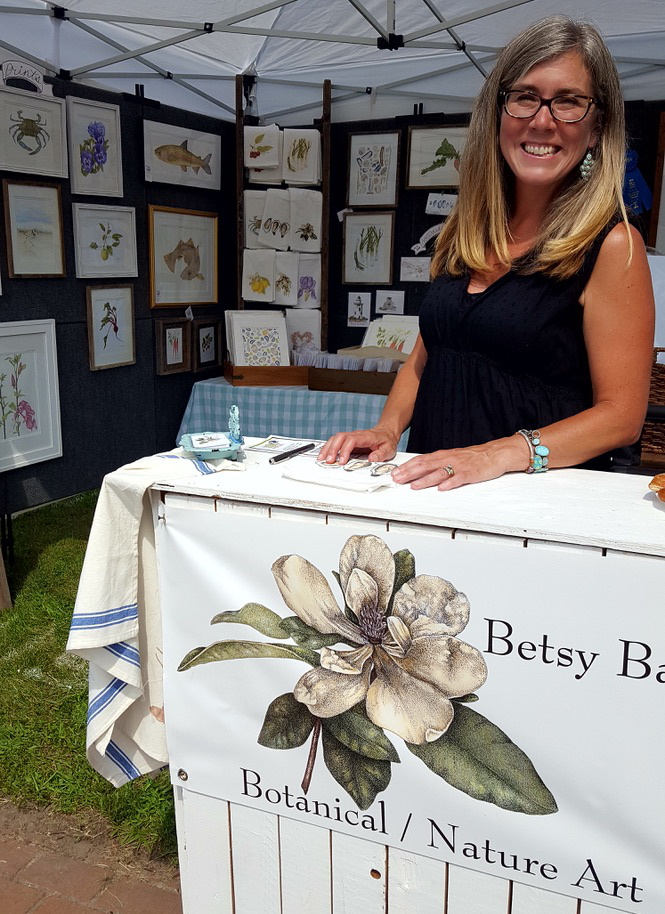
The first time I met Betsy, she was teaching a rug hooking class at the Florence Griswold Museum. But, it wasn’t until I signed up for a class at the Lyme Art Association that I became familiar with her colored pencil work. Over the weeks, Betsy stepped us through the process of creating detailed colored pencil studies of subjects found in nature. From the basics of pencil shading, to how to capture the ruggedness of a root vegetable, to flower dissections, Betsy was a wealth of information and technique tips.
Betsy has developed a distinctive colored pencil style, rooted in reality with a touch of the ethereal. I asked Betsy how she developed her style, and what led her to her artistic career.
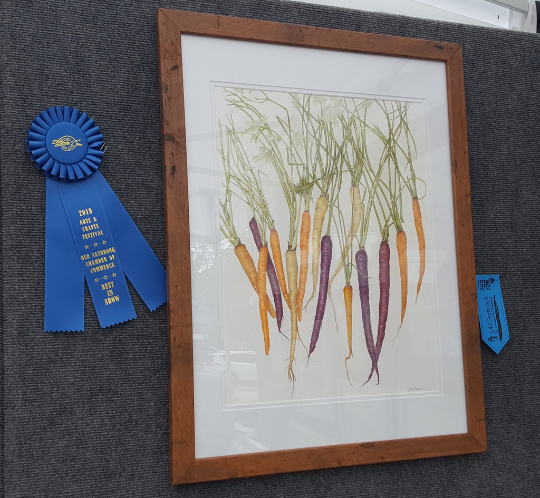
Tell me a little bit about your path to professional artist.
I have been creating some kind of art forever! I loved drawing and the look, feel, and smell of a new box of Crayola crayons.
When I was about seven or eight, I won $5 in a summertime fair for my most unusual pet—Hermie the hermit crab—and I used that fortune to buy a calligraphy pen set, which I loved and used until the ink was gone. Funds being what they were, that was the last of the pen.
Circumstances prevented me from pursuing a degree in art. (That’s a story for another day, and a bottle of wine perhaps!) So I never completed college. I was lucky enough to stay at home and raise my kiddos, and I finally got them to the point where they were a bit more self-sufficient, and I could focus some of my energies on my artwork.
I enrolled in the Society of Botanical Artists Distance Learning Diploma course, run out of the UK. Given my love of gardening and flowers, it was a great fit! I loved the detail and the expectations that the course wanted realistic drawings. I figured if I could conquer that course, I could draw anything! It was very difficult and for 27 months I didn’t do much else but draw and redraw! I graduated with Distinction, or highest honors. It was worth every bit of hard work and time.
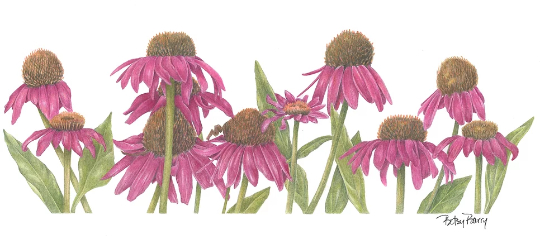
You work primarily in two different media: colored pencil and rug hooking. And your style is very different from one to the other—detailed, realistic drawing in colored pencil; and bold, funky design in your hooked rug work. What’s the benefit of working with two such distinct styles?
I do enjoy working in two different mediums. The pencil gives me a chance to practice being precise and super-focused and I look at it as being my work. Work that I love, but still my job.
My love for fiber arts gives me something entirely different. The colors and textures really appeal to me and I found rug hooking a way to create something more utilitarian. My style of hooking is really more impressionistic, so I can lighten up a little!
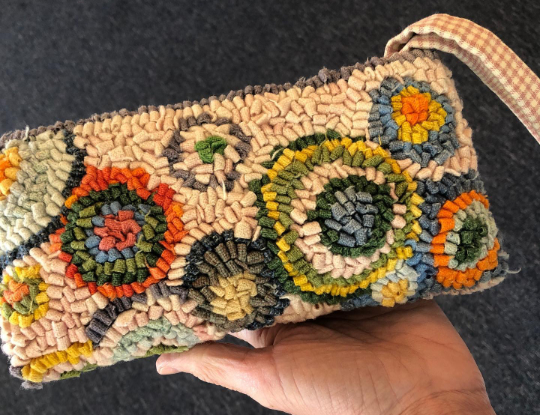
You’re probably best known for your exquisite colored pencil work documenting the natural world found here in New England. How important is sense of place and subject matter to your own personal style?
I feel like a sense of place is super important to me and my ability to create what I love. With ready access to hiking trails and coastal places, I am never without subject matter!
Being along the shoreline feeds my soul for sure. Having lived away from the coast and the changing seasons for 10 years, I make a point to appreciate where I live and really try never to take it for granted.
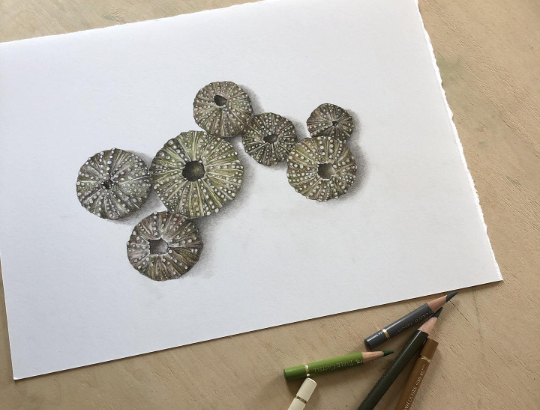
Have other artists inspired you and/or influenced the development of your own style in some way?
I have a few colored pencil masters with whom I have been so fortunate to learn from—Ann Swan and Janie Pirie are two amazing UK artists creating botanicals in colored pencil.
I also admire anyone who is really working at their craft. Artists who show up everyday and want to be creating every minute, no matter the style. I can really admire these folks. I also love purchasing art from shows and connecting to other artists.
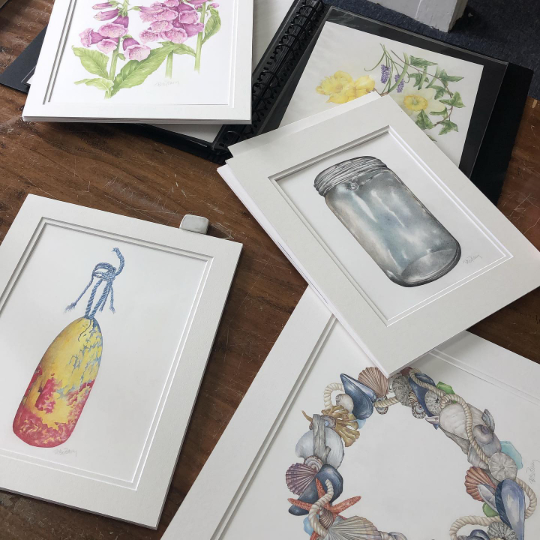
Can you offer any advice for someone who’s in the process of trying to discover their own sense of artistic style?
Well, I think having a lot of talent in many different areas, (as you do, Jess) makes it much more difficult to figure this out. You have many many styles! Picking one to just go with seems like shutting the door on all the other possibilities, but it doesn’t have to.
Maybe choose a month at a time and focus on cartoony images for February, working on typography in March, watercolor in April, etc. Maybe give yourself a dedicated time period.
Ask yourself what do you want as the end result? Commercial products? Book illustrations? Fine art shows? Picture yourself as a “professional,” and what do you see? I was all over the place earlier on, and had to pick one thing and just focus on that for a few years. Now I’m dabbling in a bit of pen and watercolor. It’s super fun and a nice break, but I have a good foundation in pencil first.
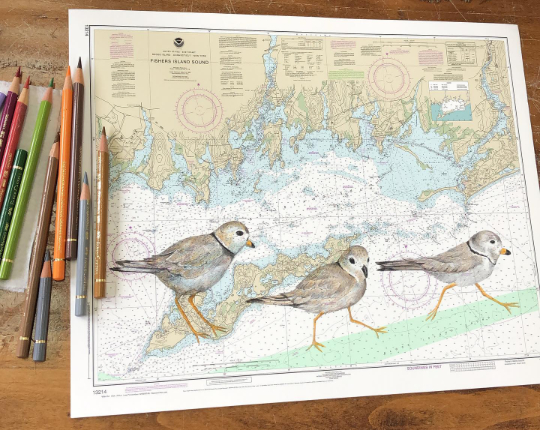
Materials, Supplies, and Resources
Betsy was kind enough to share some of her favorite supplies and resources.
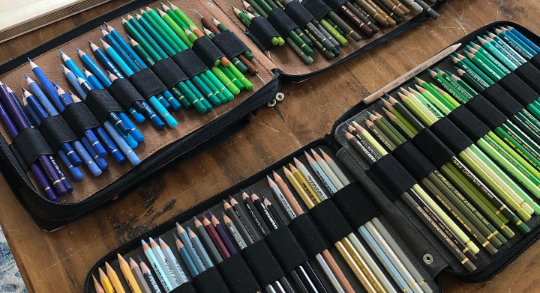
For pencils, I use Faber Castell Polychromos. They hold a superior point and can achieve more detail than the other brands. I do have a few colors in Prismacolor where the other set is lacking. Also, the Luminance by Caran d’ Ache is an excellent pencil, just expensive.
I use a hot pressed watercolor paper for all of my finished drawings, mostly Stonehenge Aqua Hot Press but other brands include Arches hot pressed and Fabriano Artistico 300 lbs. Paper is more of a personal preference. I also enjoy using the Stillman & Birn, Zeta series of sketchbooks for a super smooth surface.
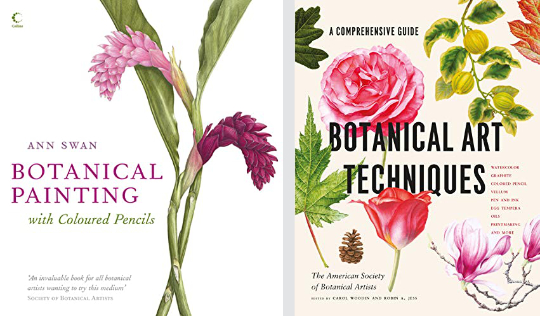
When learning colored pencil, Ann Swan has an amazing book—the one that I refer to most when I have an issue—Botanical Painting with Coloured Pencils. There are also a ton of publications from the Society of Botanical Artists that outline lots of techniques too, not only in colored pencil but watercolor and gouache as well. And a new book by the American Society of Botanical Artists (ASBA), called Botanical Art Techniques is a super resource for those just starting out drawing botanicals, lots of stuff covered in there.
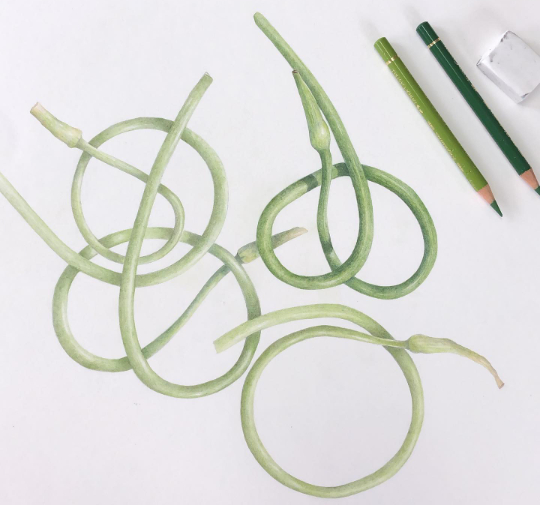
More About Betsy
If you’d like to learn more about Betsy, you can visit her website, Instagram account, or Facebook page.
And, if you’d like the chance to learn directly from the artist herself, Betsy is an instructor in the Yale Peabody Natural Science Illustration program. This March, she’ll be teaching a Botanical Illustration class.
A very big thank you to Betsy for her thoughtful answers and time. Cheers!
